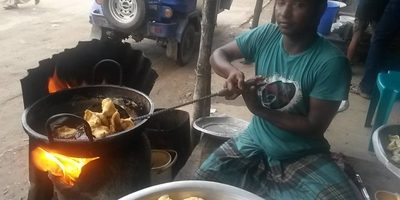
Study finds stigma as the biggest challenge associated with recovery outcomes for burns survivors in India
A paper on qualitative inquiry published in BMJ open, found that burns survivors and healthcare providers identified stigma and social exclusion associated with burns disfigurement, as the biggest challenge for recovery, both within the healthcare system, as well as in the community.
Globally, burns are a leading cause of disability with over 11 million years of life lost each year. India has one of the largest burdens of burns with an estimated 7 million burn injuries per year, disfigurement and permanent disability in 250,000 people annually. Burns survivors are also financially distressed, vocationally challenged and socially excluded. Burn deaths among women in India are reported to be higher than maternal deaths.
Interviews and focus groups were held at nine sites in urban and rural settings across India, through primary, secondary and tertiary health facilities. Participants acknowledged the challenges of burns care and recovery, and identified the need for prolonged rehabilitation. Challenges identified included:
Inadequately skilled and poorly motivated workforce: general surgery staff reported lack of skill in burns patient management, while burns unit teams reported treating burns as stressful and “not rewarding” with poor patient outcomes. Poor clinical and governance guidelines within health facilities and high staff attrition rates in burns units were observed.
Limited (financial and physical) access to services: with a limited number of burns units (~70 public sector burns units nationally) and limited resources, clinicians prioritised patient admissions and pain relief based on perceived chance of survival. Burns require multidisciplinary teams, long-term rehabilitation and access to a health facility. Barriers of cost, carers’ loss of income, and accessibility to services impaired by long distances, particularly for rehabilitation, result in poor adherence to rehabilitation regimes and poor recovery. The need for community based rehabilitation was highlighted.
Social exclusion: exclusion of burns patients within the health system and in society impacts biopsychosocial recovery. Burns survivors reported psychological and social trauma, shame, stigma, being “treated as untouchables,” and mistrust in legal and women’s protection services. These prevented genuine participation in society, with rights and access to work raised as major concerns.
Systems barriers (eg., limited infrastructure and human resources), lack of economic and social support, and poor understanding of recovery and rehabilitation were identified as major barriers to recovery.
Dr Jagnoor, lead author and our India head of Injury division, says:
Few patients with burns in LMICs receive appropriate first aid or immediate acute care, compounded by limited access to rehabilitation.
In addition to physical disabilities, this often results in further complications such as anxiety, depression and post-traumatic stress disorder, poor communication between the health care provider and the survivor, leading the patient to the conclusion that little or nothing can be done for recovery. As a result, burns survivors become emotionally overwhelmed and typically withdraw.
The aim of the study is to inform the development of acceptable models of burns care from consumer, provider and health manger perspective.




